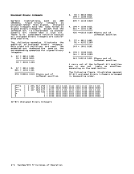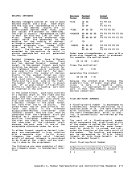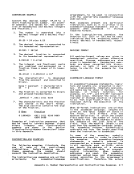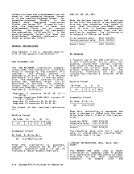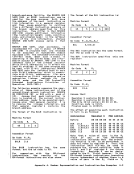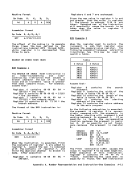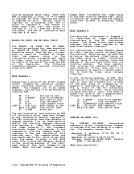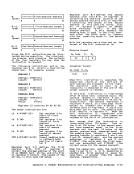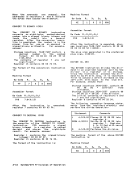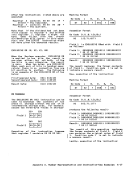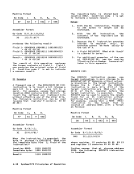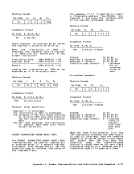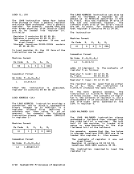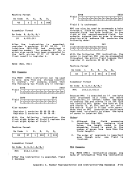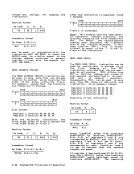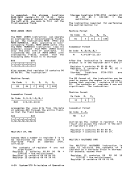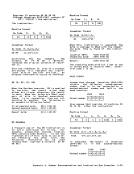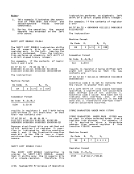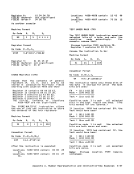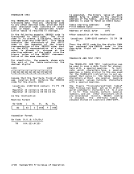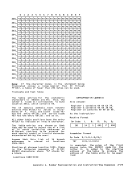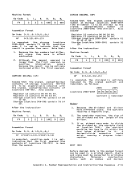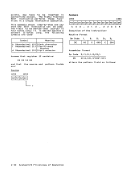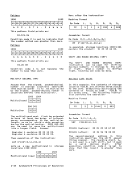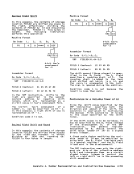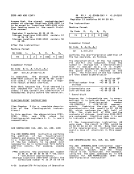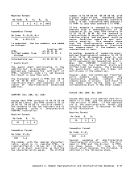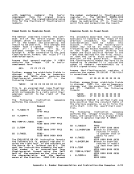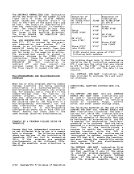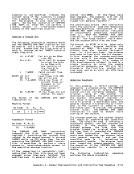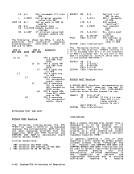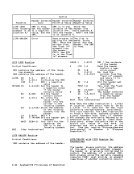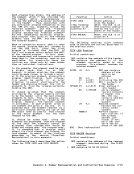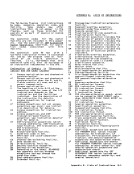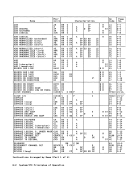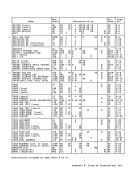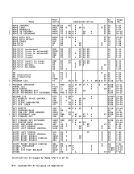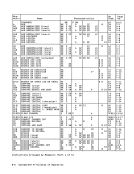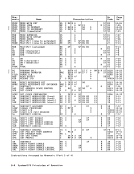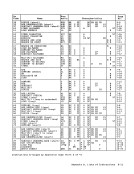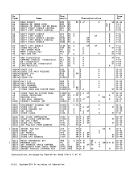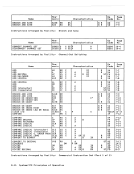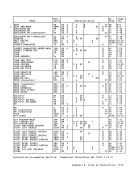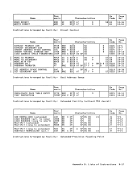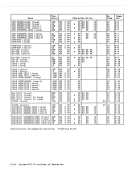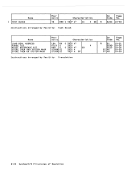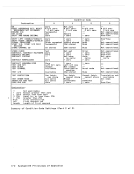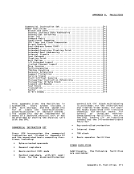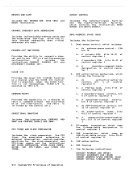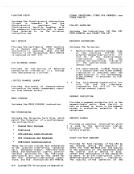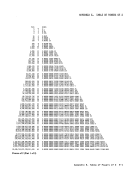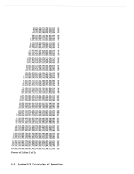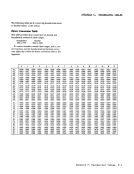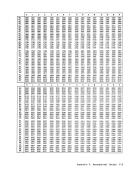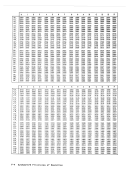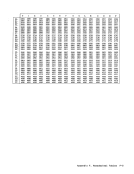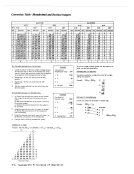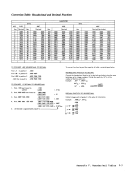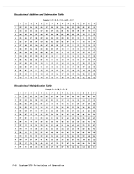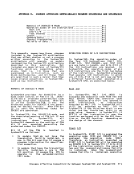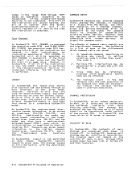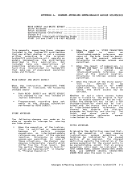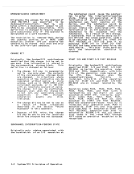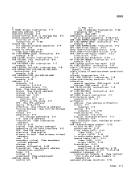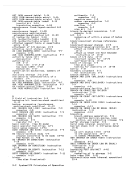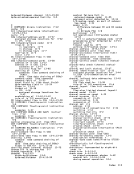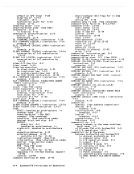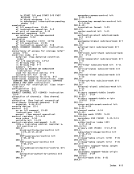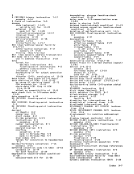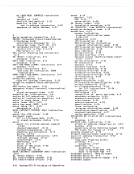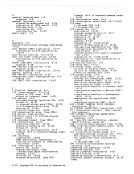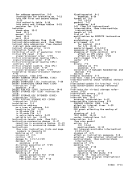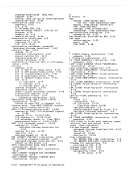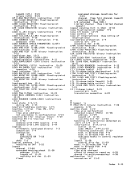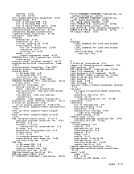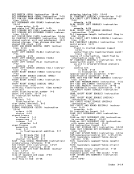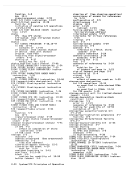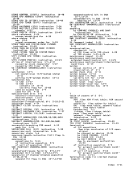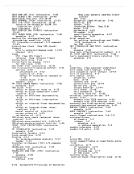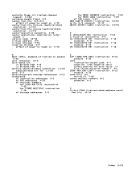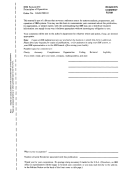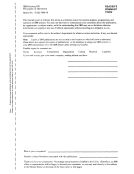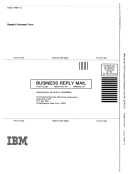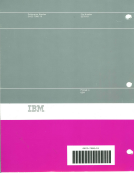accompanied by error indications from
theI/O device.
The indication of the conclusion of anI/O operation can be brought to the
attention of the program by anI/O interruption or, when the CPU is disa
bled forI/O interruptions from the
channel, by programmed interrogation of
theI/O device. An indication that will
result in a request for anI/O inter
ruption is called an interruption
condition. In either case, aCSW is
stored, which contains additional infor
mation concerning the execution of the
operation. When channel end is indi
cated in theCSW and no equipment
malfunctions have been detected, theCSW identifies the last CCW used and
provides its residual byte count, thus
indicating the extent of storage used.
Facilities are provided for the program
to initiate the execution of a chain ofI/O operations with a single START I/O or START I/O FAST RELEASE instruction. When the chaining flags in the current CCW specify command chaining and no
unusual conditions have been detected in
the operation, the receipt of the
device-end signal causes the channel to
fetch a newCCW and, if the suspend flag
;s not specified in the newCCW, to
initiate execution of a new command at
the device. If the suspend flag is
specified, execution of the new command
is not initiated, and command chaining
is terminated. Execution of the new
command is initiated by the channel in
the same way as the previous operation.Channel end and device end are not
presented to the program when command
chaining causes execution of anotherI/O operation to be initiated. However,
unusual situations can cause premature
termination of command chaining and
generation of an I/O-interruption condi
tion.
Activities that generate1/0- interruption conditions are asynchronous
to activity in theCPU, and more than
one I/O-interruption condition can exist
at the same time. The channel and theCPU establish priority among the condi
tions so that only one condition is
presented to theCPU at a time.
The execution of anI/O operation or
chain ofI/O operations involves up to
four levels of participation:
1. Except for the effects caused by
the integration ofCPU and channel
equipment, theCPU is busy for the
duration of execution of STARTI/O or START I/O FAST RELEASE, which
lasts at most until the addressedI/O device responds to the first
command.
2. The subchannel is busy with the
execution from the time condition
code0 is set for the START I/O or
STARTI/O FAST RELEASE until the CPU has accepted the I/O inter
ruption signaling that theI/O operation or, for chained oper
ations, the last operation has been
completed at the subchannel.
3. The control unit may remain busy
after the execution has completed
at the subchannel and may generate
control-unit end when it becomes
free.
4. TheI/O device is busy from the
initiation of the first operation
at theI/O device until the inter
ruption condition caused by the
device end associated with the
operation is cleared from theI/O device.
An interruption condition caused by
device end blocks the initiation of anI/O operation with the I/O device, but
normally does not affect the state of
any other part of the system. An inter
ruption condition caused by control-unit
end may block communications through the
control unit to any device attached to
it, and an interruption condition caused
by channel end normally blocks all
communications through the subchannel.
In some system models, a suspend-and
resume facility may be provided on an
individual subchannel basis for
nonshared subchannels. The mechanism
for suspending channel-program execution
provides the program a controlling func
tion over the execution of a channel
program. The initiation of the suspend
function is controlled by the setting of
the suspend-control bit in theCAW. The
suspend function is signaled to the
channel during channel-program execution
by a flag (that is, a bit set to one) in
theCCW. Suspension occurs when the channel
fetches aCCW with a valid S flag. The
command field of thisCCW is not sent to
theI/O device, and the device is
signaled that the chain of commands is
terminated. A subsequent RESUMEI/O (RIO) instruction informs the channel
that the suspendCCW may have been modi
fied and that the channel must refetch
theCCW and examine the current settings
of the flags. If the suspend flag is
zero in theCCW, the channel resumes
execution of the chain of commands.COMPATIBILITY OF OPERATION The organization of the I/O system
provides for a uniform method of
controllingI/O operations. The capa
bility of a channel, however, depends on
its use and on theCPU model to which it
is connected.Channels are provided
with different data-transfer capabili-Chapter 13. Input/Output Operations 13-7
the
The indication of the conclusion of an
attention of the program by an
bled for
channel, by programmed interrogation of
the
result in a request for an
ruption is called an interruption
condition. In either case, a
stored, which contains additional infor
mation concerning the execution of the
operation. When channel end is indi
cated in the
malfunctions have been detected, the
provides its residual byte count, thus
indicating the extent of storage used.
Facilities are provided for the program
to initiate the execution of a chain of
unusual conditions have been detected in
the operation, the receipt of the
device-end signal causes the channel to
fetch a new
;s not specified in the new
initiate execution of a new command at
the device. If the suspend flag is
specified, execution of the new command
is not initiated, and command chaining
is terminated. Execution of the new
command is initiated by the channel in
the same way as the previous operation.
presented to the program when command
chaining causes execution of another
unusual situations can cause premature
termination of command chaining and
generation of an I/O-interruption condi
tion.
Activities that generate
to activity in the
one I/O-interruption condition can exist
at the same time. The channel and the
tions so that only one condition is
presented to the
The execution of an
chain of
four levels of participation:
1. Except for the effects caused by
the integration of
equipment, the
duration of execution of START
lasts at most until the addressed
command.
2. The subchannel is busy with the
execution from the time condition
code
START
ruption signaling that the
ations, the last operation has been
completed at the subchannel.
3. The control unit may remain busy
after the execution has completed
at the subchannel and may generate
control-unit end when it becomes
free.
4. The
initiation of the first operation
at the
ruption condition caused by the
device end associated with the
operation is cleared from the
An interruption condition caused by
device end blocks the initiation of an
normally does not affect the state of
any other part of the system. An inter
ruption condition caused by control-unit
end may block communications through the
control unit to any device attached to
it, and an interruption condition caused
by channel end normally blocks all
communications through the subchannel.
In some system models, a suspend-and
resume facility may be provided on an
individual subchannel basis for
nonshared subchannels. The mechanism
for suspending channel-program execution
provides the program a controlling func
tion over the execution of a channel
program. The initiation of the suspend
function is controlled by the setting of
the suspend-control bit in the
suspend function is signaled to the
channel during channel-program execution
by a flag (that is, a bit set to one) in
the
fetches a
command field of this
the
signaled that the chain of commands is
terminated. A subsequent RESUME
that the suspend
fied and that the channel must refetch
the
of the flags. If the suspend flag is
zero in the
execution of the chain of commands.
provides for a uniform method of
controlling
bility of a channel, however, depends on
its use and on the
is connected.
with different data-transfer capabili-
























































































































































































































































































































































































































































